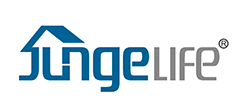In the realm of household and industrial solutions, the humbledrying rackhas undergone a remarkable transformation. Once a simple structure for air-drying clothes, it has evolved into a sophisticated product, incorporating advanced engineering and materials to meet diverse needs. This article delves into the industry-specific aspects of modern drying racks, exploring their design, materials, and applications.
Materials and Construction: The Backbone of Durability
The selection of materials is paramount in the construction of a high-qualitydrying rack. Traditionally, wood and steel were common choices. However, modern manufacturing has introduced a plethora of advanced materials. Stainless steel, known for its corrosion resistance and durability, is now widely used in premium racks. Aluminum, lightweight yet sturdy, is favored for portable and space-saving designs. Furthermore, high-strength plastics and composites offer flexibility and weather resistance, making them ideal for outdoor applications.
The construction of adrying rackinvolves intricate engineering to ensure stability and load-bearing capacity. Joints and hinges are meticulously designed to withstand repeated use and heavy loads. Welding techniques and precision manufacturing processes contribute to the overall strength and longevity of the product.
Design Innovations: Functionality and Versatility
Moderndrying rackdesigns prioritize functionality and versatility. Foldable and collapsible designs maximize space utilization, making them suitable for apartments and small living spaces. Adjustable tiers and extendable arms accommodate various garment sizes and quantities. Some racks incorporate specialized features, such as shoe drying attachments and delicate fabric hangers.
Industrial-grade drying racks are engineered for heavy-duty applications. These racks often feature modular designs, allowing for customization and scalability. They are used in laundry facilities, hotels, and hospitals to efficiently dry large volumes of linens and garments.
Applications Across Industries
The applications ofdrying racksextend beyond household use. In the textile industry, they are essential for drying fabrics and garments after dyeing and washing processes. In the food processing industry, they are used for drying fruits, vegetables, and herbs. Laboratories and medical facilities rely on specialized drying racks for glassware and equipment.
The growing demand for sustainable and energy-efficient solutions has further propelled the development of innovative drying rack technologies. Solar-powered drying racks, for instance, harness the power of the sun to accelerate the drying process, reducing reliance on electricity.
Quality Control and Standards
The manufacturing ofdrying racksadheres to stringent quality control standards to ensure safety and reliability. Load testing, durability testing, and corrosion resistance testing are conducted to verify product performance. Compliance with international standards, such as ISO certifications, is essential for manufacturers seeking to export their products.
Yongrun: Your Partner in Drying Solutions
At Yongrun, we are committed to providing high-qualitydrying racksthat meet the diverse needs of our customers. With our state-of-the-art manufacturing facilities and experienced team, we deliver innovative and reliable drying solutions for household and industrial applications. Our products are crafted from premium materials and engineered to withstand the rigors of daily use.
We offer a wide range of drying racks, including foldable racks, extendable racks, and heavy-duty industrial racks. Our commitment to quality and customer satisfaction sets us apart in the industry. Contact Yongrun today to discover how our drying solutions can enhance your drying efficiency.
Post time: Mar-03-2025


